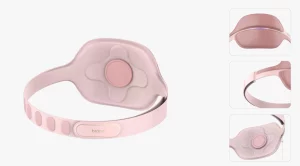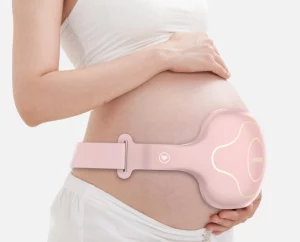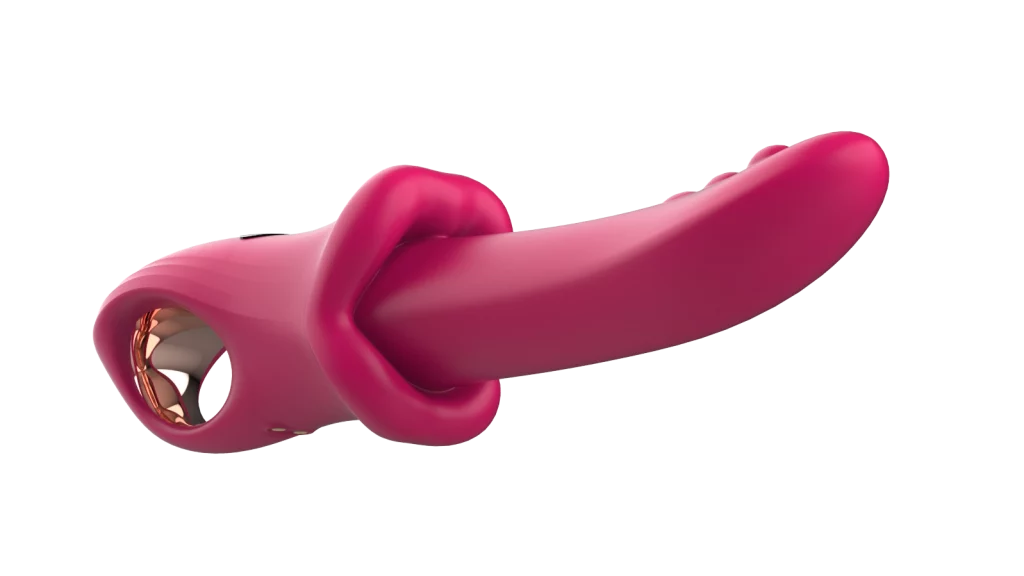
The Role of Silicone in Enhancing Doppler Fetal Belt Functionality
Properties of Silicone Beneficial to Medical Devices
Biocompatibility and Safety
Silicone is well known for being compatible with the body’s biology and is commonly used in medical tools that touch the skin without causing harm due to its non-toxic properties. A critical factor for products, like the Doppler Fetal Belt used in monitoring pregnancies. The “Foldable Sports Water Bottle uses a silicone material that is both lightweight and collapsible,” showcasing silicone’s versatility across different uses while prioritizing safety measures.
Flexibility and Comfort
Silicone flexibility enables the fabrication of gadgets that adapt to the curves of the body for enhanced comfort during extended wear periods—a feature especially advantageous for Doppler Fetal Belts required to be worn comfortably by pregnant women. Silicones’ unique capability to retain their form while remaining pliable guarantees that sensors stay securely in position without causing any discomfort.
Integration of Silicone in Doppler Fetal Belts
Improved Sensor Placement and Stability
Silicone’s inherent properties facilitate improved sensor placement and stability within Doppler Fetal Belts. The material’s ability to adhere well to different surfaces ensures that sensors remain securely positioned, leading to more accurate readings. “Liquid silicone through the feeding system can be directly into the oil press mold,” highlighting how silicone’s versatility supports precise manufacturing processes, crucial for ensuring sensor reliability in medical devices.
Enhanced User Experience through Material Adaptability
Silicone’s flexibility improves user comfort by creating an interface between the device and the skin and seamlessly combining with other materials in fetal belts for a cohesive design where all parts work together smoothly. “Its insulation properties and ability to compress and resist slippage make silicone a top choice, for ensuring users’ comfort without any irritation.”
Technological Innovations Driven by Silicone in Fetal Monitoring

Advancements in Sensor Technology with Silicone Use
Precision and Accuracy Improvements
Silicone plays a role in enhancing sensor technology by boosting precision and accuracy due to its reliable chemical properties that guarantee consistent performance across different conditions—a critical aspect for accurately tracking fetal heart rates. The benefits of using a hydraulic press include high efficiency as the machine can rapidly produce liquid silicone products. This highlights how advancements in production lead to sensor capabilities.
Durability and Longevity of Devices
Silicone’s lasting quality helps Doppler Fetal Belts stand the test of time and become a cost-efficient choice in the long run by withstanding wear and various environmental conditions like temperature changes that maintain device functionality for extended durations—a critical feature for medical equipment needing lasting dependability.
Impact on Data Collection and Analysis
Real-time Monitoring Capabilities
Silicone plays a role in improving the effectiveness of real-time monitoring by maintaining consistent physical properties that enable uninterrupted data collection over time without any disturbances or deterioration in quality. With an ultrasound operating frequency of 3MHz providing detection of fetal heart signals, it showcases how the integration of technology, with silicone materials facilitates efficient data retrieval.
Enhanced Data Accuracy for Better Decision Making
Silicone plays a role in enhancing the accuracy of data in Doppler Fetal Belts, which helps improve decision-making in prenatal care practices significantly. The consistent performance of sensors housed within silicone constructions offers healthcare professionals the information needed to evaluate fetal well-being efficiently.
Advancements in Doppler Fetal Belt technology are constantly enhancing the well-being of both mothers and infants by utilizing the characteristics of silicone to boost comfort and accuracy while ensuring durability remains a key factor in improving health outcomes for both parties in modern healthcare settings.
Future Prospects of Silicone in Doppler Fetal Belt Development
Emerging Trends in Material Science for Medical Applications
The realm of material science is constantly advancing with the introduction of improved silicone composites and mixtures that boost the capabilities of medical equipment. Localized changes are critical in enhancing the efficiency of Doppler Fetal Belts. The creation of silicone formulas enables increased flexibility, durability, and compatibility with the human body—all crucial for guaranteeing patient well-being and ease. As silicone technology advances it is anticipated that these materials will provide thermal endurance and toughness, promoting the enhancement of fetal monitoring setups.
Potential Developments in Wearable Health Technology
The field of health technology is progressing quickly thanks to the significant role that silicone plays in its advancement. Silicone’s versatility makes it perfect for producing devices that are both comfortable and efficient. Future innovations could involve the creation of more advanced Doppler Fetal Belts that incorporate high-tech sensors and connectivity options to improve real-time monitoring capabilities. Using silicone’s distinct characteristics allows these devices to seamlessly connect with digital health platforms and offer important information on maternal-fetal health.
CASINDA’s Contribution to Doppler Fetal Belt with Silicone Solutions

CASINDA has played a role in improving Doppler Fetal Belt by utilizing creative silicone solutions. CASINDA was founded in 2017. Has concentrated on developing and manufacturing products with a special emphasis on silicone rubber items.
CASINDA shows its focus on quality by holding certifications like ISO 9001 2015 and ISO 14001 2015, which highlight CASINDA commitment to upholding manufacturing practices and environmental stewardship standards. IATF 16949 2016 certified CASINDA confirms its products meet quality criteria, further proving their suitability for vital uses such as fetal monitoring.
To sum up, the potential future of silicon in the advancement of the Doppler Fetal Belt looks bright thanks to advancements in materials science and the efforts of industry pioneers such as CASINDA. The incorporation of cutting-edge silicon-based products will further enhance monitoring technologies, ultimately leading to better health results for both mothers and babies across the globe.







